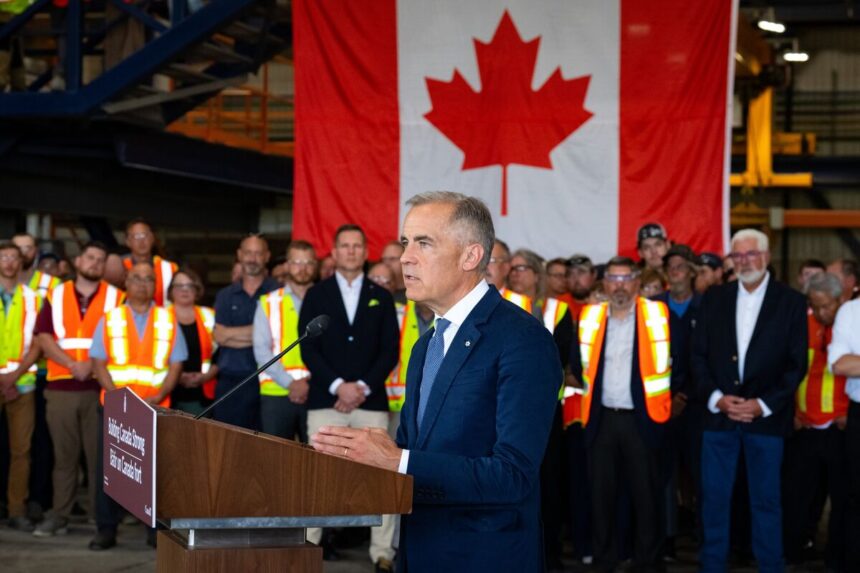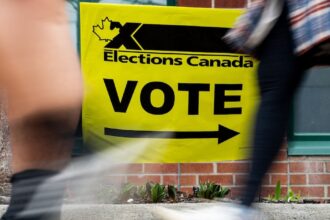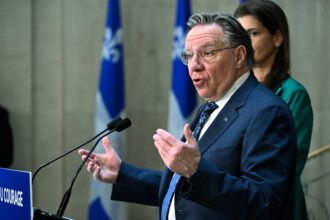In a stunning escalation of cross-border tensions, Prime Minister Mark Carney’s administration is grappling with the severe economic fallout from President Donald Trump’s surprise implementation of punitive tariffs against Canadian goods. The measures, ostensibly tied to Canada’s handling of fentanyl trafficking, have sent shockwaves through financial markets and left Ottawa scrambling for a coherent response.
“This is economic warfare dressed up as drug policy,” remarked Dr. Helena Voss, chief economist at the Royal Bank of Canada. “The timing couldn’t be worse for Canada’s already fragile economic recovery.”
The tariffs, ranging from 10-25% on key Canadian exports including lumber, aluminum, and automotive parts, have already triggered a 3.2% decline in the Canadian dollar against its American counterpart. The Toronto Stock Exchange saw its steepest single-day drop in 14 months, with manufacturing and resource sectors bearing the brunt of investor anxiety.
At the heart of Trump’s justification lies an accusation that Canada has failed to stem the flow of Chinese-manufactured fentanyl precursors across the shared border. While Canadian border officials reported a 43% increase in seizures of such chemicals over the past year, the Trump administration has deemed these efforts “wholly insufficient” and “enabling the poisoning of American communities.”
Finance Minister Chrystia Freeland has attempted to downplay the economic impact, calling the measures “temporary and negotiable,” but internal government projections obtained by CO24 paint a bleaker picture. The confidential analysis suggests potential GDP contraction of 0.7% if the tariffs remain in place through year’s end, with over 38,000 jobs at immediate risk in export-dependent sectors.
For Carney, who campaigned on promises of economic stability and improved Canada-U.S. relations, the crisis represents his first major foreign policy test. His previous experience as Bank of England governor and Goldman Sachs executive has done little to shield him from criticism that he was caught flat-footed by Trump’s aggressive economic posturing.
“The Prime Minister’s background in international finance was supposed to be his strength,” noted political analyst Jerome Bertrand from the University of Toronto. “Instead, we’re seeing how theoretical expertise doesn’t always translate to managing real-world diplomatic crises.”
Industry leaders across Canada are sounding alarm bells. In Hamilton’s steel district, manufacturing giant Dofasco has already announced a production slowdown affecting 1,200 workers. Meanwhile, British Columbia’s lumber producers estimate losses exceeding $780 million in the first six months if tariffs remain unchanged.
The opposition Conservative Party has seized the opportunity, with leader Pierre Poilievre declaring the tariffs “the predictable result of Liberal incompetence on border security.” His party has gained 4 points in the latest national polling, suggesting the economic turmoil is already reshaping Canada’s political landscape.
International trade experts point to concerning parallels with Trump’s first term, when similar tariff threats were used as leverage in NAFTA renegotiations. “The playbook is familiar,” says Dr. Miguel Santana of the Peterson Institute for International Economics. “Use economic pain as a bargaining chip, regardless of the stated rationale.”
Cabinet ministers are reportedly divided on the appropriate response. Sources within the government reveal Trade Minister Mary Ng has advocated for immediate retaliatory tariffs on American imports, while others favor a more diplomatic approach through existing trade mechanisms.
As emergency economic meetings continue in Ottawa, the question remains: can Carney leverage his international reputation and financial acumen to defuse this crisis, or will Canada’s economy become collateral damage in America’s renewed economic nationalism? The answer may determine not just Canada’s economic trajectory, but the political future of a Prime Minister whose leadership now faces its defining challenge.










